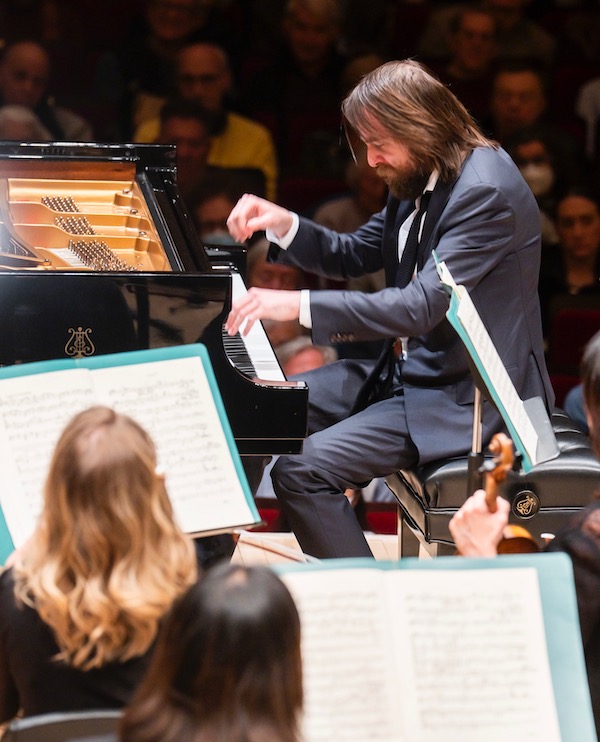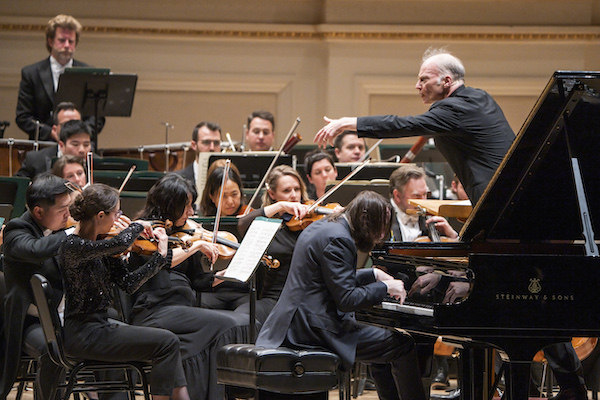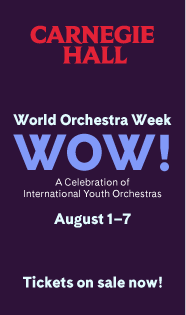Trifonov’s existential Prokofiev with National Symphony transcends time, genre

This past winter and so far this spring there have been several fantastic orchestral performances in Carnegie Hall; the Vienna Philharmonic with Bruckner’s Symphony No. 8, the Montreal Symphony playing Mahler’s Fifth Symphony, and the Philadelphia Orchestra with fill-in conductor Marin Alsop and Stravinsky’s Rite of Spring. To that add Tuesday night’s concert from the National Symphony Orchestra and conductor Gianandrea Noseda.
Substantial credit goes to the evening’s soloist, pianist Daniil Trifonov who performed in Prokofiev’s Piano Concerto No. 2. It’s not that the orchestra wasn’t notable; they impressed with George Walker’s Symphony No. 4 and, after intermission, Stravinsky’s Firebird. It’s just that Trifonov was incredible, delivering the finest and most thrilling pianism many in the audience are likely to ever hear.
The one-word elevator pitch for the program was “character.” This was music full of personality—the exoticism of early Stravinsky is well known, and it was complemented by Walker’s rich lyricism and Prokofiev’s alternating sardonic coolness and bracing violence. This music demanded equal character from the musicians, and the orchestra mostly, but not always, delivered.
The performance of Walter’s one-movement symphony, subtitled “Strands,” was terrific. The music has weight to it far out of proportion to its relative brevity, with constantly shifting inner textures and a harmonic motion that is expansive but never fully rests on either consonance or dissonance. The sense of smooth forward flow in the playing was ideal, and the short, slow middle section had tremendous tenderness. The orchestra played with a real sense of advocacy for the music, and Noseda maintained a nice taut line through the piece.
Trifonov’s historical greatness is established, and yet his playing in the concerto was stunning in the way of hearing not only something extraordinary but unexpected. Everything was at the extreme edge of possibilities—romantic sensations, the pleasure and excitement in fleet execution, and explosive expression that went beyond any description in normal language—and everything also felt unmannered, organic, emotionally and intellectually logical.
The shape of the entire first movement was beyond brilliant, not just from Trifonov but the orchestra. There was a moment-by-moment buildup of tension and energy, each moment in perfect proportion to the overall form. There was an edge to Trifonov’s playing from the jaunty opening on that promised enormous rewards. These paid off beyond expectations in the cadenza.
Here, Trifonov took the burgeoning energy, expression, and precision of his playing and used them to ignite a bonfire. Without losing any direction, articulation, or control, Trifonov made the music wilder, bit by inevitable bit, until the intensity and density of ideas and meaning in his playing obliterated notated music, reaching the physical thill of Jerry Lee Lewis at his most frenzied, and the mass of intellect and abstract poetry at the heights of an improvisation by the late, titanic Cecil Taylor.
Trifonov’s specialness as an artist meant that the smooth quickness of the Scherzo was just as compelling, and his perfectly measured legato and sense of dynamics and weight in the Intermezzo were just as gripping and expressive. He was supported by superb playing from the orchestra and uncanny integration, via Noseda, not just coordinated in time but in expressive purpose. The musicians seemed as excited by Trifonov as was the audience, and equally as enthused about the music as the pianist.
An encore was more than obligatory, both to acknowledge the ovations and to bring the passion down to a manageable level. Trifonov dashed off the Gavotte from Prokofiev’s 3 Pieces from Cinderella, and it went down like fine vodka on the rocks.

After this, it was perhaps inevitable that even with The Firebird, the second half would be something of a letdown. It was, but due to the music, not the playing. The orchestra sounded as fresh and energetic as in the first half, but there was far less sense of character in the playing, a real loss in this piece. Instrumental colors were nowhere near as vivid as before, and the tension Noseda had been expertly managing lulled in the more transitional sections, like the “Supplication of the Firebird,” which should be ravishing, and the “Round Dance of the Princess” which was sluggish.
There was plenty of fire for the climactic passages, though, and in the whole the string articulation was something special. One had not heard such fine, precise, and clear string detail in even the tiniest rhythms, from the fastest and brightest music to the “Lullaby.” It was stimulating and satisfying to hear the tiny steps that make such a grand journey.
The Boston Symphony Orchestra plays Escaich, Ravel, and Rachmaninoff, 8 p.m., April 24. carnegiehall.org

